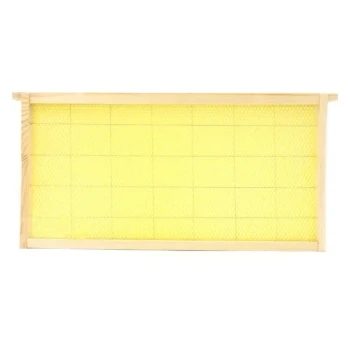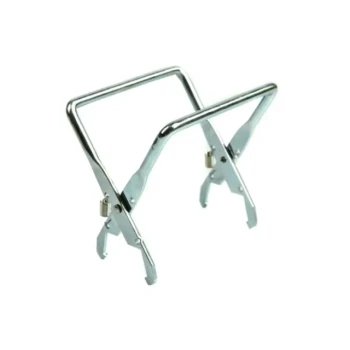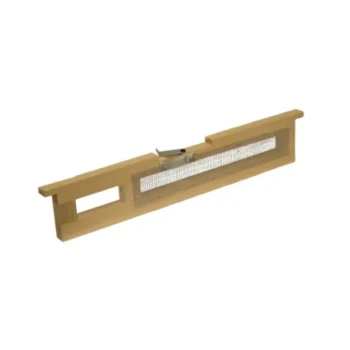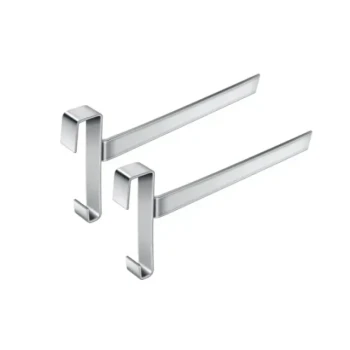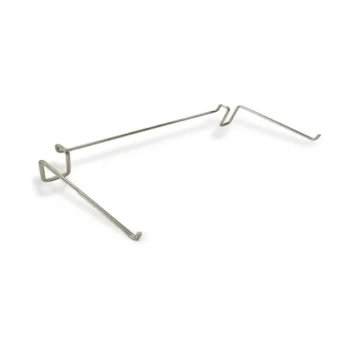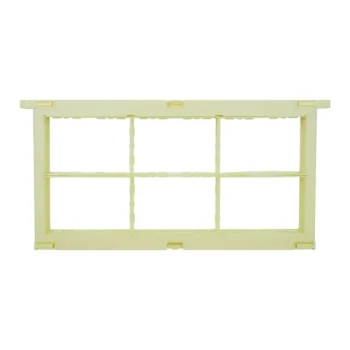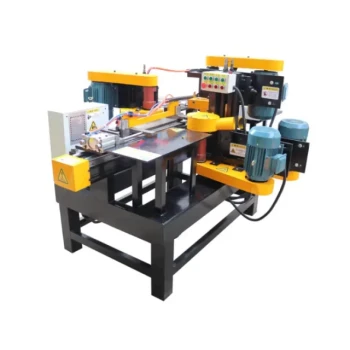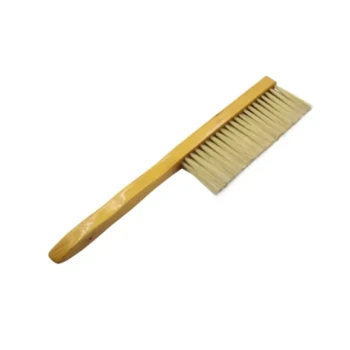To secure the wire at the top of a beekeeping frame, you loop the end of the wire several times around a partially driven nail located in the top bar. Once the wire is taut and looped, you hammer the nail in completely. This action pinches and locks the wire securely against the wood.
The core principle is not just about attaching the wire, but about locking in the tension you've built during the threading process. The nail acts as a simple, effective anchor that prevents the taut wires from slackening.
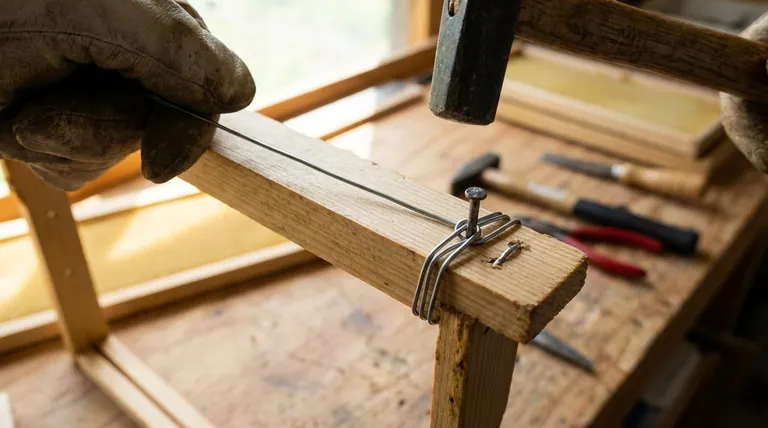
The Mechanics of Securing the Wire
The final step of wiring a frame is simple but crucial. Its success depends on the setup and the tension maintained throughout the process.
The Starting Setup
The process begins and ends on the same side of the frame, where two small nails are placed in the top bar. One nail is hammered in fully to anchor the start of the wire, while the other is only partially hammered in to serve as the finishing anchor.
The Final Loop
After threading the wire through all the eyelets in the side bars, you must pull the wire tight one last time. This is the most critical moment for maintaining tension.
Driving the Nail Home
With the wire held tight, wrap it firmly around the shaft of the partially driven nail three to four times. Then, hammer this nail the rest of the way into the frame. The pressure from the nail shaft clamps the wire loops against the wood, creating a secure hold.
Finishing the Job
Once the nail is fully seated, the excess wire can be easily broken off. Simply bend the wire back and forth at the point where it exits the nail; it will snap cleanly.
The Critical Role of Tension
Merely attaching the wire is not the goal. The entire purpose of wiring a frame is to create a rigid support structure for the wax or plastic foundation.
The "Pluck Test"
The most common way to check for proper tension is to pluck one of the wires like a guitar string. A correctly tensioned wire will produce a clear, pinging sound. A dull thud indicates the wire is too loose.
How to Achieve Tension
To get the wires tight enough, many beekeepers use a wiring board or jig. This device slightly bows the frame's sidebars inwards during threading. When the frame is removed from the jig, the sidebars spring back to their normal position, pulling the wires perfectly taut.
Common Pitfalls to Avoid
This seemingly simple process has a few points where things can go wrong. Being aware of them can save you significant frustration.
Losing Tension at the Last Second
It is very easy to let the wire go slack in the moment you transfer it from your pulling hand to wrap it around the nail. Maintain a firm grip until at least two loops are around the nail.
Insufficient Wraps
Looping the wire only once or twice might not provide enough friction. Over time, a wire with too few loops can slip and lose tension, especially with the weight of honeycomb and the heat inside a hive.
Hammering the Final Nail Prematurely
Ensure the second nail is only driven in part-way at the start. If you hammer it in fully, you will have no post around which to wrap and secure the wire at the end.
Making the Right Choice for Your Goal
- If your primary focus is durability: Ensure you wrap the wire a minimum of three to four times around the nail before hammering it in to guarantee it will not slip.
- If your primary focus is speed and consistency: Use a wiring jig to achieve uniform, repeatable tension across dozens of frames with minimal effort.
- If you are a beginner without special tools: Focus on pulling the wire as tight as you can by hand and immediately wrapping it around the nail to lock it in place before it has a chance to slacken.
Properly wired frames provide the essential structure for strong, straight honeycomb, forming the foundation of a healthy and productive hive.
Summary Table:
| Step | Key Action | Purpose |
|---|---|---|
| 1. Setup | Partially drive a nail into the top bar. | Creates an anchor post for the wire. |
| 2. Loop | Wrap the taut wire 3-4 times around the nail. | Builds friction to prevent slipping. |
| 3. Lock | Hammer the nail in completely. | Pinches and secures the wire loops. |
| 4. Finish | Snap off the excess wire. | Creates a clean, professional result. |
Build a more productive apiary with perfectly wired frames. Properly tensioned frames are the foundation for strong, straight honeycomb. As a trusted wholesale supplier to commercial apiaries and distributors, HONESTBEE provides the high-quality beekeeping equipment and supplies you need for efficiency and durability. Let us help you streamline your operation. Contact our experts today to discuss your needs and request a wholesale quote.
Visual Guide
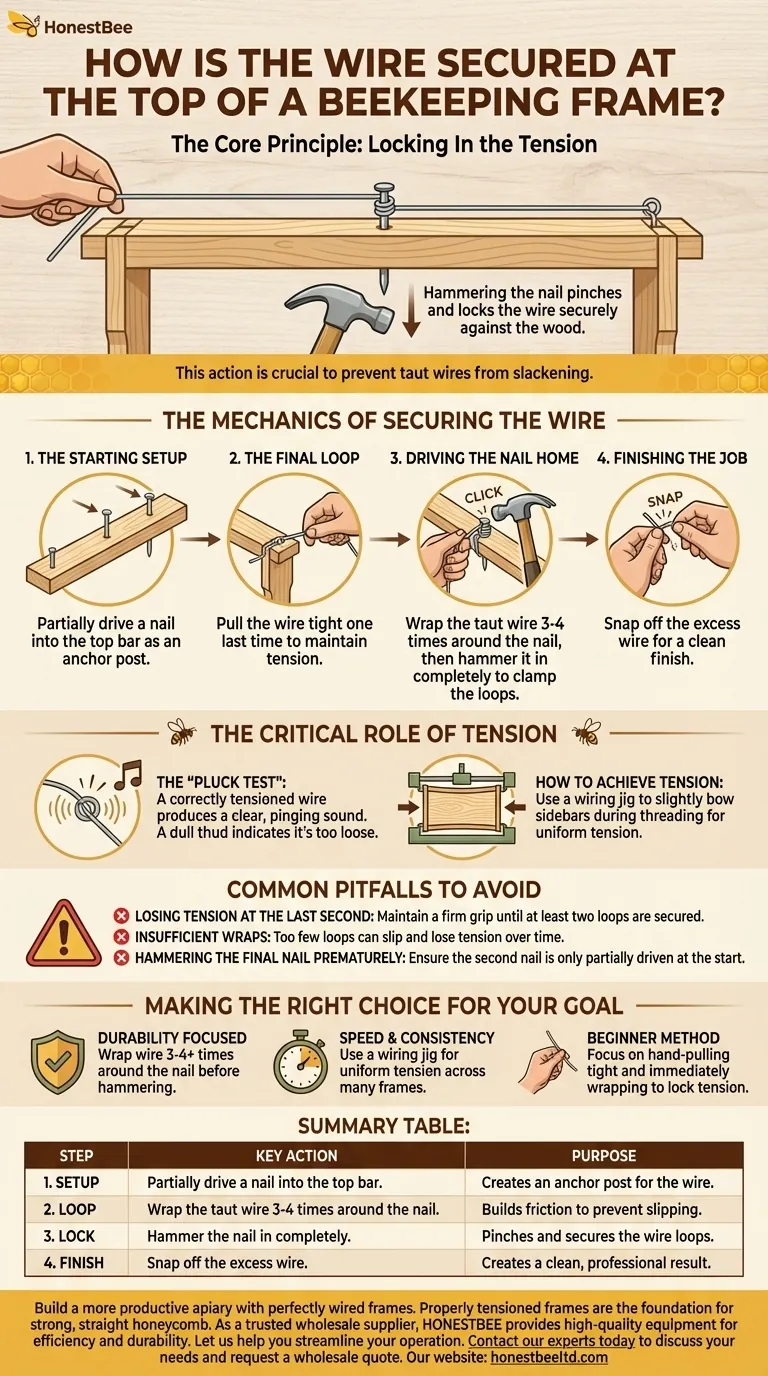
Related Products
- Assembled Wooden Bee Frames with Beeswax Foundation Ready to Use by HONESTBEE
- HONESTBEE Wired and Assembled Wooden Bee Frames Foundation for a Thriving Hive
- Heavy-Duty Stainless Steel Clip-On Frame Perch
- Assembled Wooden Bee Frames with Plastic Foundation for Durability and Convenience by HONESTBEE
- Plastic Bee Frame Beekeeping Hive Frames for Wholesale
People Also Ask
- What are some tips for setting up hive frames? Build a Strong Foundation for Your Hive
- How many frames fit in a 10 frame hive? A Guide to Maximizing Your Hive's Potential
- Can old bee frames be reused? Weighing the Risks vs. Rewards for Your Hive
- Can I reuse old frames? A practical guide to saving money and reducing waste
- How do wooden frames perform during honey extraction? Superior Rigidity for a Smoother Harvest
